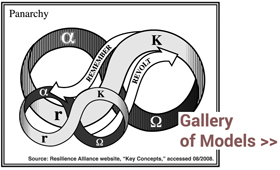
In David Ing’s presentation for the upcoming International Society for the Systems Sciences conference, I caught reference to a 2010 IBM report on systems of systems (“The world’s 4 trillion dollar challenge: Using a system-of-systems approach to build a smarter planet“).
At a fundamental level, our world consists of 11 core systems (see Figure 1). Each system has evolved over time to serve a specific need or want of society. Collectively, they form a global system of systems, representing 100 percent of our worldwide gross domestic product (GDP).
Each individual system is an amalgamation of public and private sector organizations that span multiple industries. For example, Healthcare includes doctors, hospitals, pharmacies, insurers, researchers, drug manufacturers and more – all the entities that contribute to keeping people healthy, whether government-sponsored or private enterprise.
The report is well worth a look. This understanding of global societies as a system of systems is extremely powerful. And it may be the case that this depiction of 11 systems covers 100 percent of GDP, but that does not mean that this depiction is necessarily the correct one.
Some regrouping of data might be valuable. For example, given the importance of energy, it’s helpful to see the transportation and electricity systems split out. I’d similarly like to see thermal energy described separately. Also, farming is a very different system from fisheries, even though both supply food.
More fundamentally, using GDP as the sole metric of a system’s contribution undervalues social and social-ecological systems that are not as prominent in the formal economy. One example would be religion. Another is forestry, which may be but a small component of infrastructure, but can play a big role in habitat destruction or stewardship, depending on forest management practices. The water system in the figure is depicted as having significant outgoing interactions, reflecting its economic contributions, with multiple systems. Yet, in fact, global estimates find that roughly 70 percent of water use goes to agriculture. I suppose these contributions are not as monetarily valuable. [Update: More likely because I should recall that not all agriculture is edible. Thus the arrow from water to clothing.)
Other questions are of course outside the systems boundary of the report itself. For example, whom do these systems serve? How important are equity considerations? Do these systems enable development of individual and social capacities? Can these systems be sustained, given human dependence on nature’s resources and ongoing flows of services?

